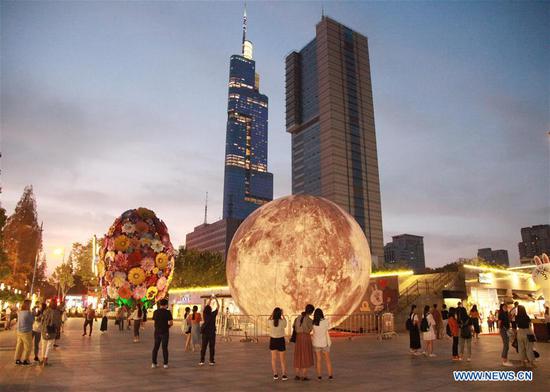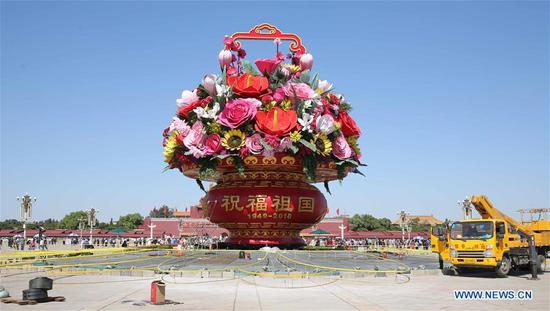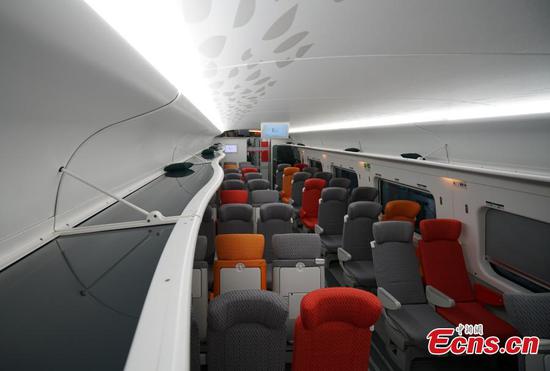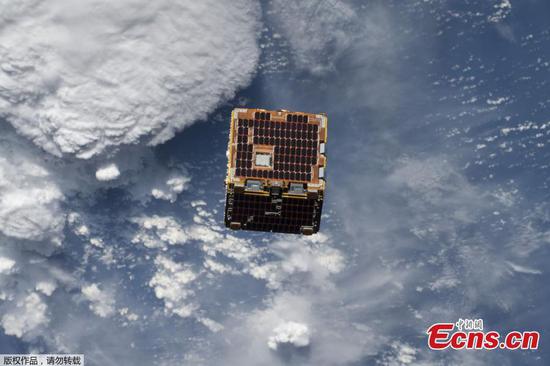
Steve Taylor, who runs a small grocery for 16 years, shows a scarf made in China in his store in Estes Park, a small town located at the foothill of Rocky Mountain in north Colorado, the United States on Sept. 21. 2018. Estes Park is a popular summer resort attracting tourists from all of the world, and most of products in shops there are labeled "Made in China". (Xinhua/Li Ying)
Steve Taylor has run a small grocery for 16 years in Estes Park, a small town located at the foothill of Rocky Mountain in north Colorado. He said he had to wait and see what would come out of the U.S.-China trade frictions.
"We'll have to wait and see. Our buying season will be next Spring," he told Xinhua on Friday about trade frictions between the United States and China.
Estes Park is a popular summer resort attracting tourists from all of the world, and most of products in shops there are labeled "Made in China".
The United States, disregarding overwhelming international and domestic opposition, recently announced the imposition of additional 10-percent tariffs on 200 billion U.S. dollars worth of Chinese products from Sept. 24.
In response, China announced on Tuesday it will add additional tariffs on U.S. products worth 60 billion dollars starting from Sept. 24.
For retailers like Taylor, the first snow of this year has not fallen, but the whole industry has been preparing for it for several months.
RETAILERS MAKE PREPARATIONS
"Tariffs on most consumer products have yet to take effect but retailers appear to be getting prepared before that can happen," Jonathan Gold, vice president for Supply Chain and Customs Policy of the National Retail Federation (NRF), said in July after the number of containers imported set a new record for single month in June.
As Gold predicted, the latest monthly Global Port Tracker report issued by the NRF and Hackett Associates on Sept. 10 showed that July and August continued posting record arrivals of containers.
Ports covered by the report handled 1.9 million Twenty-Foot Equivalent Units (TEU) in July, up 2.8 percent from June and up 5.6 percent year-on-year. A TEU is one 20-foot-long cargo container or its equivalent.
The report estimated the tally in August at 1.92 million TEU with a rise of 4.8 percent year-on-year, becoming the third month in a row to set a new record for the number of containers imported during a single month.
"The current boom in shipping can primarily be explained by importers' response to the U.S. trade war with China," Hackett Associates founder Ben Hackett explained in a press release.
"Consumers appear to be spending money on goods ahead of the tariff price increases that will eventually come. But there could be a rocky road ahead as the impact of tariffs begins to be more fully felt," he predicted.
"More tariffs could come any day, and retailers have been bringing in record amounts of merchandise ahead of that in order to mitigate the impact on their customers," Gold said.
The NRF emphasized that imports don't necessarily mean sales, but the solid number of containers coming into the country could indicate that retail sales during the crucial holiday season won't flounder because of tariffs, at least not this year.


















































